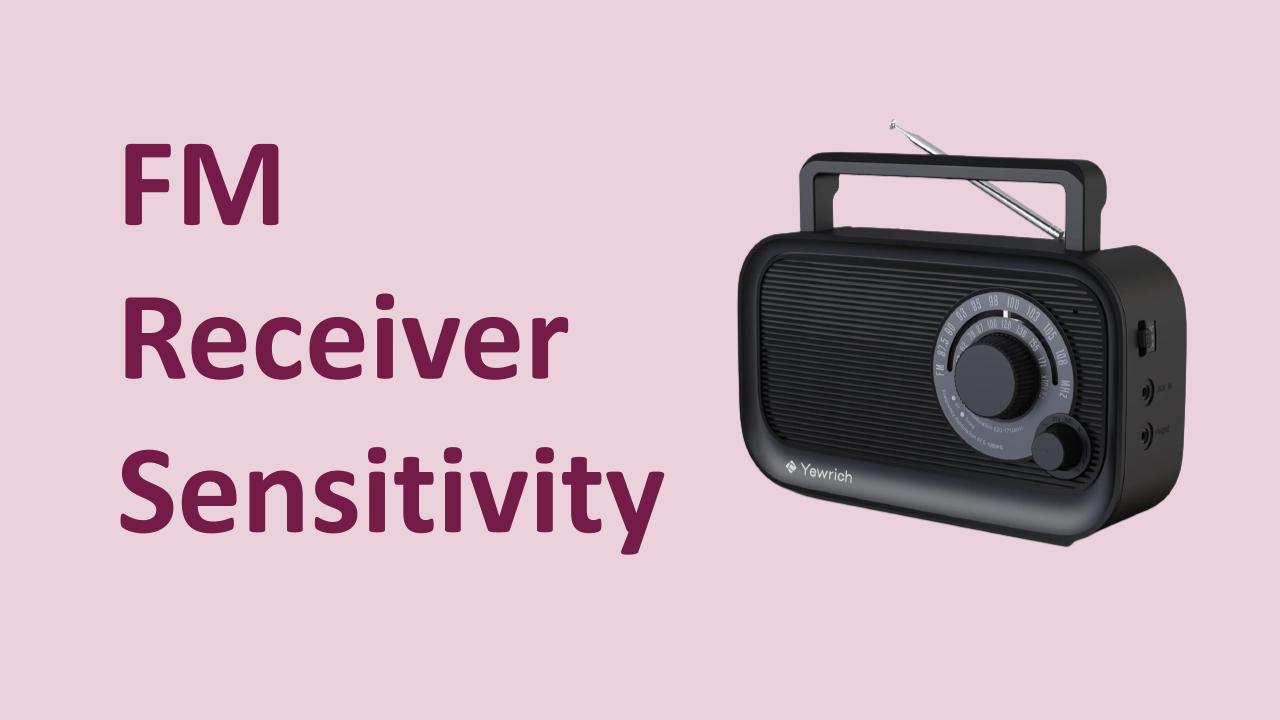In this post we calculate the sensitivity of a Frequency Modulation (FM) Radio Receiver.
Sensitivity is the minimum power of an RF signal that can be detected by a receiver. It depends on noise figure and minimum required Signal-to-Noise Ratio (SNR).
Calculator
The calculator below is the same as the receiver sensitivity calc. Except I’ve populated it with numbers that make sense for a FM receiver
You will need the following parameters:
- Temperature
- Bandwidth
- Receiver Noise Figure
- Signal to Noise Ratio (SNR) required to achieve the desired performance
Temperature – This is the operating temperature. As it increases, the noise power increases. This degrades the receiver sensitivity
Bandwidth – FM bandwidth is 270 kHz
Receiver Noise Figure – This can vary depending on the quality of the front end. Use 5 dB for a typical number. Cheaper receivers will have a higher number (e.g. 10 dB).
The SNR depends on the modulation format. Typically the SNR increases with the complexity of modulation. Use 10 dB for FM reception.
Using these numbers in the calculator gives a sensitivity of around -105 dBm.
In general, radio systems that are more sensitive cost more to build than those that are less sensitive. This is because they take better quality RF components such as low noise amplifiers, filters and oscillators – all of which contribute to noise. The lower the noise figure of these circuit components, the lower the noise and the higher the SNR.
FM Sensitivity Values in dBm, Volt and dBf
The sensitivity of an FM tuner is sometimes specified in dBf (deciBel relative to Femtowatt). For instance the a typical tuner has a sensitivity of 8 dBf. A level between 8 dBf and 12 dBf is considered very good.
Use the dBf to dBm calculator to find that this equates to -112 dBm.
-112 dBm converts to
- 0.56 μV for a 50 ohm impedance
- 0.69 μV for 75 ohm
Note that is the Root-mean-square or RMS voltage
Sensitivity of FM chips
It’s difficult to find the sensitivity numbers in many of the FM data sheets that I came across online.
However the Si4720 chip is an exception.
Below is an excerpt from the data sheet

The sensitivity in a 50 ohm system with an SNR of 26 dB is 1.1 μV. This converts to -106 dBm. Using the dBm to dBf calculator, the equivalent is 14 dBf.
The sensitivity for Radio Data System operation is 15 μV which equates to -83 dBm or 37 dBf.
How to improve FM Radio Receiver Sensitivity?
The quickest and easiest way to improve the sensitivity of a FM radio is to add a Low Noise Amplifier after the antenna and before the radio. The LNA must operate in the 87.5-108 MHz frequency band.
In some regions, the FM band extends lower to 76 MHz, so if you live in that region it would be important to get a LNA that extends lower.
Summary
We have discussed the sensitivity of FM chips and demonstrated how to use our calculators to find values in uV, dBm and dBf.
